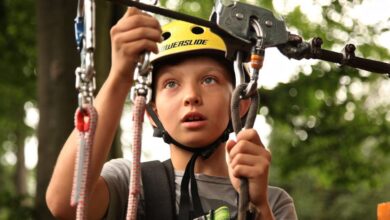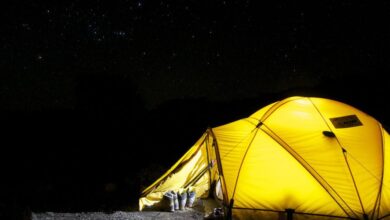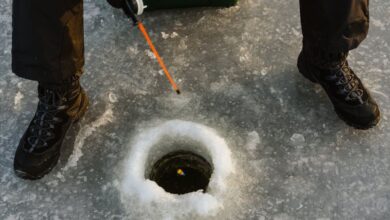How Do I Book Campsites in the Rockies during Peak Season
Planning a camping trip in the Rockies during peak season can be an exhilarating yet daunting task. With breathtaking landscapes, diverse wildlife, and endless recreational opportunities, it’s no wonder that camping in this majestic region draws thousands of visitors each year. However, securing a campsite during the peak summer months requires foresight and strategic planning. Here’s a guide to help you navigate the booking process effectively.
Understanding Reservation Systems
Many campsites in the Rockies operate through reservation systems that allow campers to secure their spots in advance. Popular areas often use platforms like Recreation.gov or ReserveAmerica, where you can check availability and make reservations. Familiarize yourself with these websites ahead of time, as they provide detailed information about each campsite, including amenities, location, and regulations.
Keep in mind that peak season typically runs from late June through mid-September. Campsites can fill up quickly during this period, especially on weekends and holidays. Therefore, it’s crucial to plan your trip well in advance. Most sites allow reservations up to six months prior to your desired camping date, so mark your calendar and be ready to book as soon as the window opens.
Choosing the Right Campsite
The Rockies host a variety of campsites, ranging from established campgrounds with modern amenities to more primitive sites for those seeking solitude. Consider the type of experience you want: Do you prefer a family-friendly campground with facilities, or are you looking for a remote retreat? Research the options available in the specific area you wish to visit, such as Rocky Mountain National Park, Banff, or Yoho National Park.
Pay attention to campsite features such as proximity to hiking trails, water sources, and restrooms. Reading reviews from previous campers can provide valuable insights into the best sites, helping you make an informed decision. Additionally, some areas may require permits for backcountry camping, so be sure to check the regulations in advance.
Booking Strategies
To increase your chances of securing a desirable campsite, employ several booking strategies. Start by creating a list of preferred campsites along with alternative options in case your first choice is unavailable. Flexibility with your travel dates can also be beneficial; consider camping mid-week instead of weekends, as sites typically fill up more quickly on Fridays and Saturdays.
If you’re planning a trip with a large group, make sure to reserve a group campsite if available. These sites are designed to accommodate multiple tents and often provide additional amenities. However, keep in mind that group sites also book quickly, so act fast.
Utilizing Alerts and Notifications
Many reservation platforms offer alert systems to notify you of site availability. Sign up for these alerts to stay informed about openings at your chosen campsites. Additionally, follow social media pages or join camping forums where fellow enthusiasts share tips and availability updates. This network can be an invaluable resource for last-minute bookings or cancellations.
Consider Off-Peak Alternatives
If you find that popular campsites are fully booked, don’t despair. Explore alternative camping options such as lesser-known campgrounds or dispersed camping areas, which often allow you to camp outside designated sites. Researching these options can lead to hidden gems, providing a unique experience away from the crowds.
Another idea is to venture further into the backcountry. While this requires more preparation and gear, it can lead to stunning, secluded locations. Just remember to acquire any necessary permits and familiarize yourself with the Leave No Trace principles to protect the natural beauty of the area.
Preparing for Your Trip
Once you’ve secured your campsite, it’s time to prepare for your adventure. Create a checklist of essential gear, food, and safety equipment. Familiarize yourself with the weather conditions typical for the region during your visit and pack accordingly. Always check for any park alerts or hazards that may affect your trip.
By following these guidelines, you can navigate the peak season campsite booking process and set the stage for an unforgettable experience in the Rockies. With the right planning and a spirit of adventure, your camping trip can be filled with breathtaking views and cherished memories.







